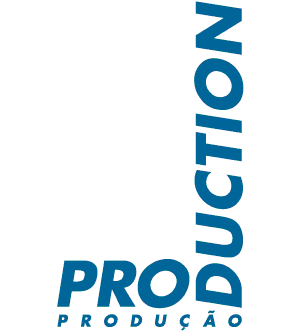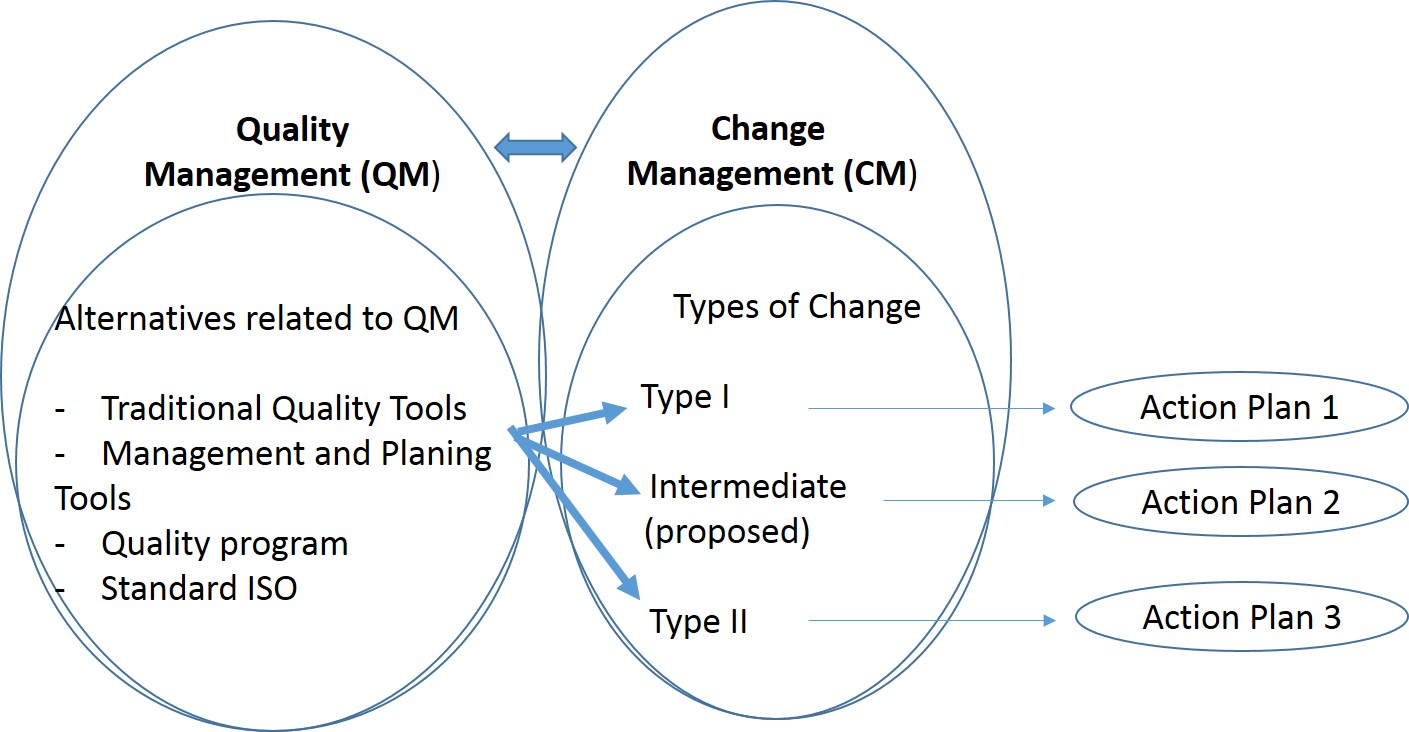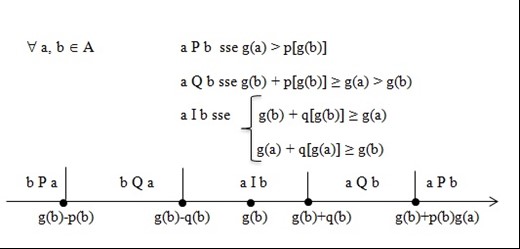|
Traditional Quality Tools
|
Fluxogram |
Graphic representation showing all steps of the process (Brassard, 1991Brassard, M. (1991). The Memory Jogger: a pocket guide of tools for continuous improvement (2nd ed.). Methuen: Goal/QPC.). |
| Checklist |
Useful to register direct observations and help to gather facts about the process (Oakland, 1989Oakland, J. (1989). Total quality management. London: Heinemann Professional.). |
| Pareto chart |
A vertical bar chart that allows us to determine which problems to solve and determine the priority (Brassard, 1991Brassard, M. (1991). The Memory Jogger: a pocket guide of tools for continuous improvement (2nd ed.). Methuen: Goal/QPC.). |
| Control Chart |
Monitoring a system in order to observe the existence of alterations to the expected average over time (Brassard, 1991Brassard, M. (1991). The Memory Jogger: a pocket guide of tools for continuous improvement (2nd ed.). Methuen: Goal/QPC.). |
| Histogram |
It involves data measuring, revealing how much variation exists in any process (Brassard, 1991Brassard, M. (1991). The Memory Jogger: a pocket guide of tools for continuous improvement (2nd ed.). Methuen: Goal/QPC.). |
| Cause-and-effect diagram (also called Ishikawa or fishbone chart) |
The relation between the “effect” and all possibilities of “cause” that may contribute to this effect (Brassard, 1991Brassard, M. (1991). The Memory Jogger: a pocket guide of tools for continuous improvement (2nd ed.). Methuen: Goal/QPC.). |
| Scatter plot |
Study of the possible relation between two variables (Brassard, 1991Brassard, M. (1991). The Memory Jogger: a pocket guide of tools for continuous improvement (2nd ed.). Methuen: Goal/QPC.). |
|
Management and planning (MP) tools
|
Relation diagram |
It shows many relevant factors in a situation or complex problem, indicating logical relations between the same factors by arrows (Moura, 1994Moura, E. (1994). As sete ferramentas gerenciais da qualidade: implementando a melhoria contínua com maior eficácia. São Paulo: Makron Books.). |
| Affinity diagram |
It groups together many sets of verbal data about a situation or problem by affinity or natural relation (Moura, 1994Moura, E. (1994). As sete ferramentas gerenciais da qualidade: implementando a melhoria contínua com maior eficácia. São Paulo: Makron Books.). |
| Tree diagram |
It shows the chaining of all secondary objectives and what is needed to achieve them (Moura, 1994Moura, E. (1994). As sete ferramentas gerenciais da qualidade: implementando a melhoria contínua com maior eficácia. São Paulo: Makron Books.). |
| Prioritization matrix |
It enables the establishment of a numerical order of priority for possible solutions, tasks or questions (Moura, 1994Moura, E. (1994). As sete ferramentas gerenciais da qualidade: implementando a melhoria contínua com maior eficácia. São Paulo: Makron Books.). |
| Relation matrix |
Multidimensional analysis, identifying the correlation level between two or more groups of factors (Moura, 1994Moura, E. (1994). As sete ferramentas gerenciais da qualidade: implementando a melhoria contínua com maior eficácia. São Paulo: Makron Books.). |
| PDPC diagram |
Exploration of possible ways and events, from an initial situation until a desired final situation (Moura, 1994Moura, E. (1994). As sete ferramentas gerenciais da qualidade: implementando a melhoria contínua com maior eficácia. São Paulo: Makron Books.). |
| Activities diagram |
It details the chaining of activities required to implement and monitor a plan (Moura, 1994Moura, E. (1994). As sete ferramentas gerenciais da qualidade: implementando a melhoria contínua com maior eficácia. São Paulo: Makron Books.). |
|
Quality program
|
5S |
The management and participative program that aims to create adequate work conditions for all people at all hierarchical levels of the organization. |
| Quality Function Deployment QFD |
Method that seeks to ensure that the final Project of a product or service meets the needs and desires of clients (Slack et al., 2009Slack, N., Chambers, S., & Johnston, R. (2009). Operations management: financial times (6th ed.). Pretencie Hall.). |
| Failure mode and effects analysis –FMEA |
It identifies failures before they occur using a checklist. The goal is to identify what service/product characteristics are critical (Slack et al., 2009Slack, N., Chambers, S., & Johnston, R. (2009). Operations management: financial times (6th ed.). Pretencie Hall.). |
| Six Sigma |
The improvement program created by Motorola aiming to eliminate defects and improve the productive process of a product or service (Slack et al., 2009Slack, N., Chambers, S., & Johnston, R. (2009). Operations management: financial times (6th ed.). Pretencie Hall.). |
|
Standard ISO
|
9001:2015 |
The ISO 9001:2015 entitled “Quality management systems – Requirements” specifies requirements for quality management systems when an organization needs to demonstrate its abilities or aims to enhance customer satisfaction. |
| Set of support standards |
These standards, called supporting standards, are important for an efficient and effective QMS. It is worth noting that the company will utilize and implement the supporting standards that best suit the needs and particularities of the company. These standards do not certify. |

 Thumbnail
Thumbnail
 Thumbnail
Thumbnail
 Thumbnail
Thumbnail


